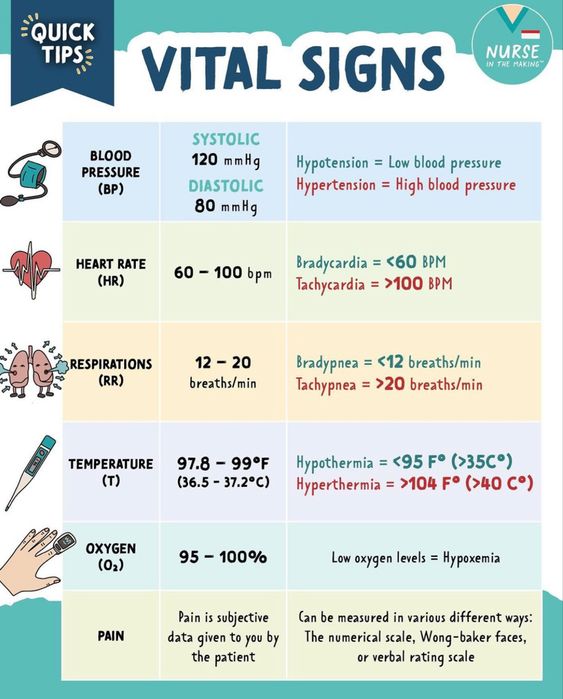
When you go to the doctor, he or she will take your vital signs. These are measurements of some of the most important aspects of your health and wellness. They’re easy to measure and can tell a lot about how well you’re doing. If you are unfamiliar with these vital signs, it’s important that you learn about them so that if/when they need to be taken, there’s no confusion!
Blood Pressure
Blood pressure is the force of blood against the walls of your arteries. It’s measured by a sphygmomanometer, which measures both systolic and diastolic pressures (the first number and second number on your blood pressure reading). Low blood pressure is called hypotension, and it can be dangerous because it makes you feel weak or faint. High blood pressure is called hypertension–it puts stress on your heart and damages other organs in addition to increasing risk for stroke and heart attack
Heart Rate
Heart rate is the number of times your heart beats in one minute. It’s measured with a stethoscope, and can be affected by physical activity, stress and illness. A normal resting heart rate is 60-100 beats per minute (bpm).
Respirations
In order to know if someone is in distress or needs medical attention, it’s important to take their respiration rate. The normal adult respiratory rate is 12-20 breaths per minute. This can change with age and exercise:
- Children have higher respiration rates than adults do (up to 30 breaths per minute).
- Elderly people may have lower respiratory rates than younger adults (5-15 breaths per minute).
- People who are exercising will breathe faster than those who aren’t exercising at all–this is why you should always check the vital signs of anyone who has been exercising before sending them home from an injury clinic!
Temperature
Temperature is a measure of the heat in your body, and it’s measured with a thermometer. Body temperature can be taken orally or rectally, but it’s more common to measure it orally because it’s less invasive.
- Oral Temperature: Your doctor will likely take your temperature this way if they suspect that you have an infection or illness in your throat or lungs (like pneumonia). The thermometer has to be inserted into the mouth until it reaches under where the tongue meets the roof of your mouth–but not so far down that it goes into any part of your throat! This method can also be used by parents who want to check on their child without waking them up (which isn’t always easy).
- Rectal Temperature: Doctors sometimes use this method when taking care of newborns because their bodies are still so small and flexible; using an oral thermometer would require moving around too much during sleep time which could wake up babies prematurely!
Oxygen Levels
Oxygen is a critical component of the human body. It’s used in every cell to create energy and keep you alive. Oxygen levels are measured with a device called a pulse oximeter, which clips onto your finger or earlobe and uses LED lights to measure how much blood flows through your capillaries–the small blood vessels that connect your arteries and veins. Oxygen saturation refers to how much oxygen is in this blood; it’s expressed as a percentage ranging from 0% (no oxygen) up through 100%. In healthy people who have been breathing room air, normal saturation levels average around 96-98%. However, if you’re experiencing low levels of oxygenation due to illness or poor health habits (e.g., smoking), you may have lower readings than usual:
We hope that this article has helped you understand the vital signs of the human body and how they affect your health. If you are unfamiliar with these terms, we encourage you to learn more about them so that if an emergency situation ever arises where someone needs immediate medical attention, they can be properly cared for.
